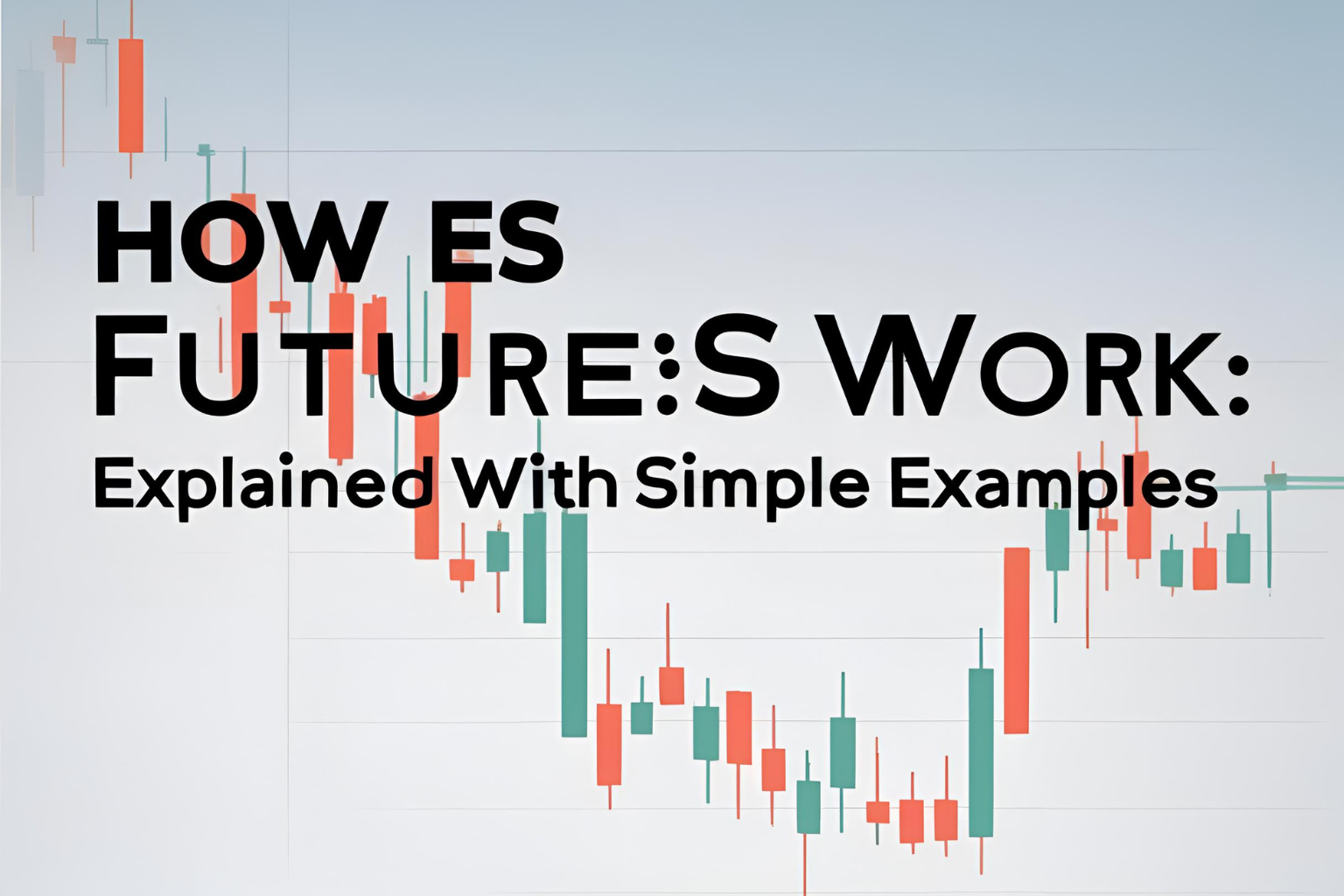How ES Futures Work: Explained with Simple Examples
ES futures, also known as E-mini S&P 500 futures, are among the most traded futures contracts globally. They allow traders to speculate on the direction of the S&P 500 Index — without owning any of the 500 underlying stocks.
In this article, you’ll learn how ES futures work, including contract specifications, tick sizes, margin requirements, and trading mechanics — all in simple, easy-to-follow language.
What Are ES Futures?
The ES ticker refers to the E-mini version of the S&P 500 futures contract, traded electronically on the CME (Chicago Mercantile Exchange). These contracts are popular for their high liquidity, lower margin requirement, and 23-hour trading access.
Each ES futures contract represents $50 times the S&P 500 Index value. If the index is at 4,200, one ES contract is worth:
bashCopyEdit$50 × 4200 = $210,000
How ES Futures Work: Key Components
Let’s break down how these contracts function in real trading:
1. Contract Size
- Multiplier: $50 × S&P 500 Index
- Example: If the index is at 4,150, contract value = $207,500
2. Tick Size & Tick Value
- Minimum price movement (tick) = 0.25 index points
- Each tick is worth:
bashCopyEdit0.25 × $50 = $12.50 per tick
So, a 1-point move equals 4 ticks and is worth $50 per contract.
Example Trade
Let’s say you go long (buy) 1 ES contract at 4,000 and sell at 4,010.
- Gain = 10 points
- 10 points = 40 ticks
- 40 ticks × $12.50 = $500 profit
Similarly, a 10-point drop would result in a $500 loss, unless you use a stop-loss.
3. Margin Requirements
To open a position, you don’t need the full contract value. Instead, brokers require:
- Initial Margin: Typically $10,000–$12,000 (varies by broker)
- Day Trading Margin: As low as $500–$1,000 for intraday positions
Margins are subject to change based on volatility and broker policy.
4. Trading Hours
ES futures trade nearly 23 hours per day, Sunday to Friday:
- Open: Sunday at 6:00 PM (ET)
- Close: Friday at 5:00 PM (ET)
- Daily Maintenance Break: 5:00 PM–6:00 PM (ET)
This extended schedule is great for global traders and reacting to overnight events.
5. Why Trade ES Futures?
Here’s why ES futures are attractive to traders:
| Feature | Benefit |
|---|---|
| High Liquidity | Tight spreads and quick order execution |
| Leverage | Trade large values with small margin |
| Tax Efficiency (U.S.) | Section 1256 contracts (60/40 rule) |
| Around-the-clock access | Nearly 24-hour trading window |
6. Who Should Trade ES Futures?
ES futures are ideal for:
- Intraday traders using technical setups
- Swing traders looking for short-term trends
- Hedge funds and institutions managing S&P 500 exposure
- Investors seeking portfolio diversification
Final Thoughts
Understanding how ES futures work is crucial before risking your capital. These contracts offer huge potential, but also come with significant leverage and volatility.
Start with a demo account, learn tick values, margin rules, and always trade with a system. As we move forward, we’ll explore platforms, strategies, and real-time analysis tailored to the ES market.
✅ Focus Key Phrase
How ES futures work
✅ 5 SEO FAQs
1. What is the ES futures contract size?
Each ES contract represents $50 times the S&P 500 Index value.
2. What is the tick size in ES futures?
0.25 index points. Each tick is worth $12.50.
3. How much margin is required to trade ES futures?
Initial margin is around $10,000–$12,000; day trading margins may be as low as $500.
4. Can I trade ES futures at night?
Yes, ES futures trade almost 24 hours a day, 5 days a week.
5. What platform can I use to trade ES futures?
Popular platforms include ThinkorSwim, NinjaTrader, TradeStation, and Interactive Brokers.
